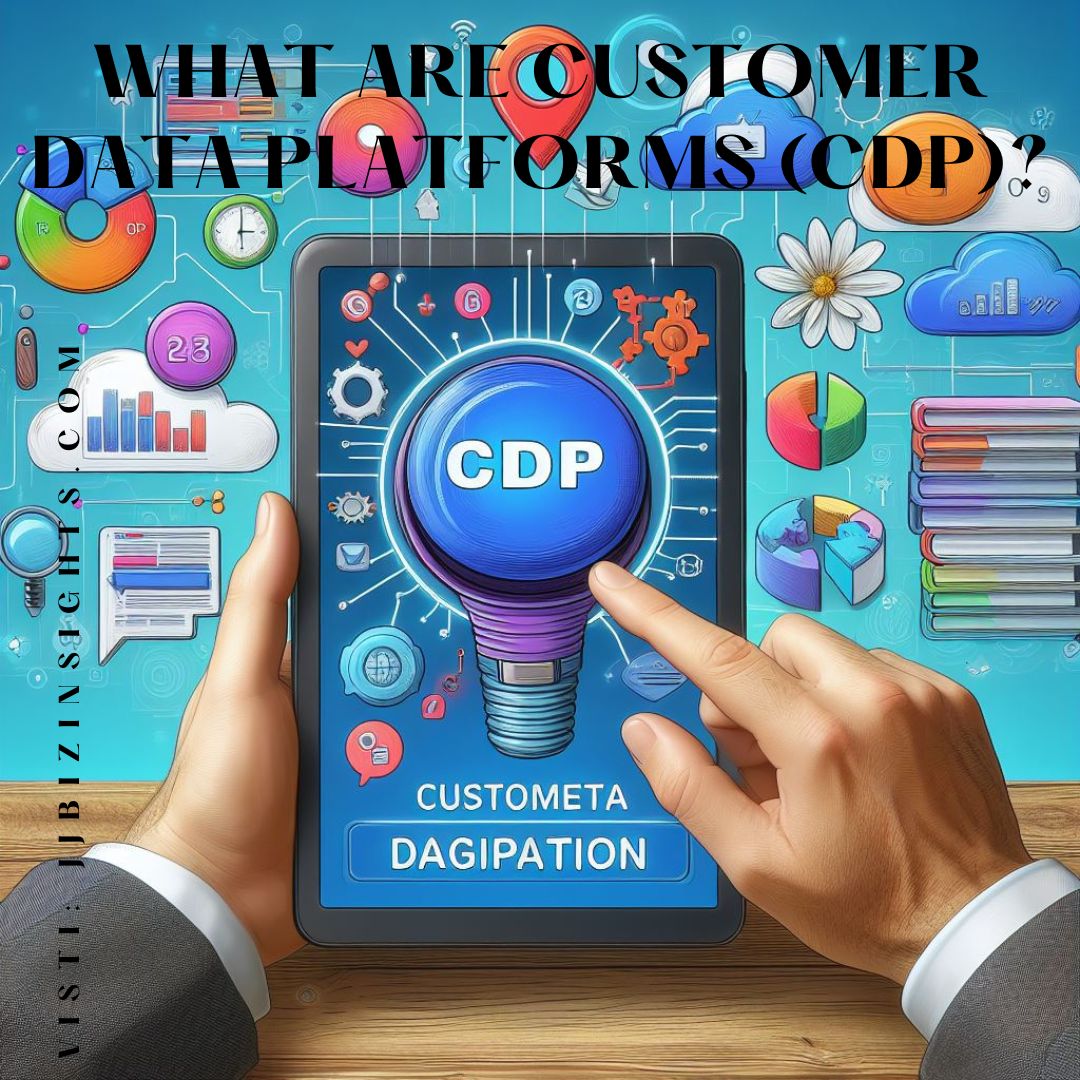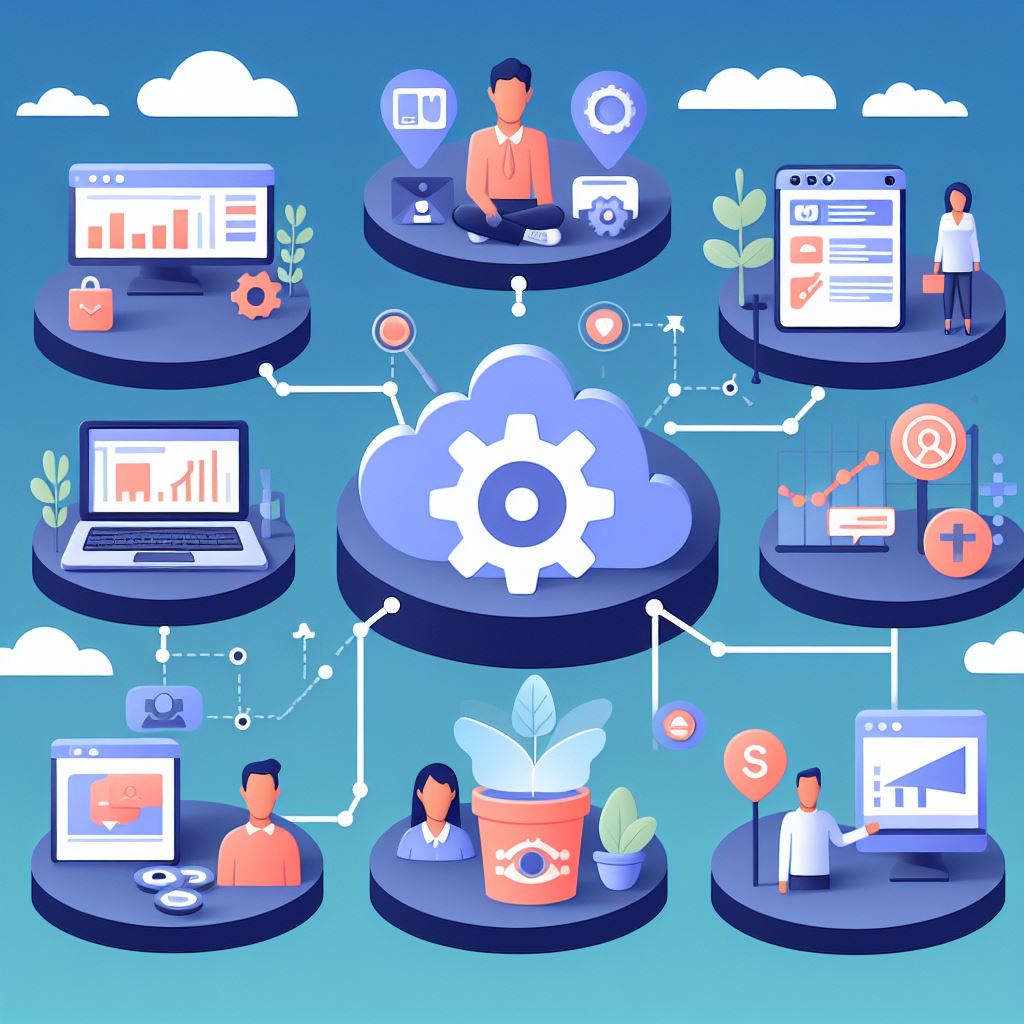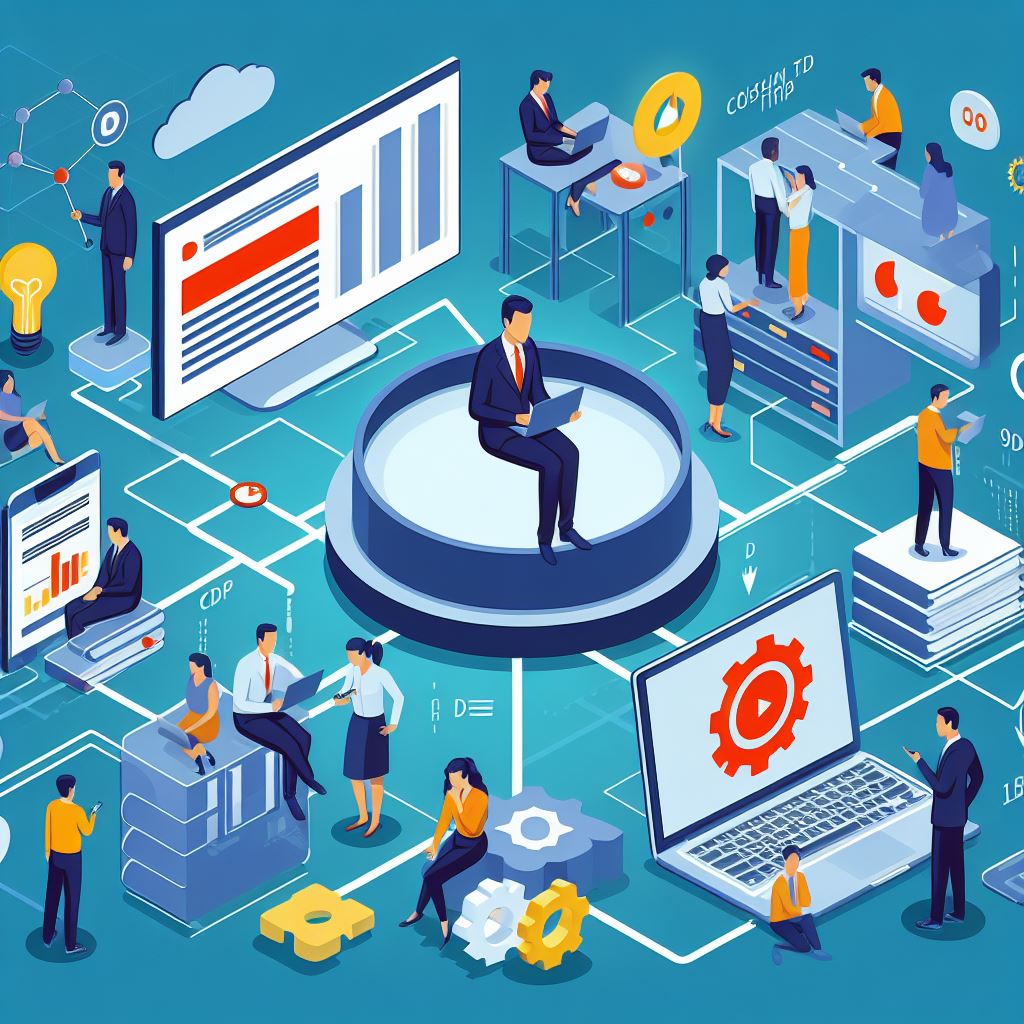
What are Customer Data Platforms (CDP)?
In today’s data-driven marketing landscape, understanding your customers is no longer a luxury, it’s a necessity. Traditional marketing strategies relying on siloed data sources are becoming increasingly ineffective. This is where Customer Data Platforms (CDPs) emerge as game-changers.
What is a Customer Data Platform ?

A Customer Data Platform (CDP) is a marketing software solution that acts as a central hub for all your customer data. It collects, unifies, and analyzes customer data from various sources, including:
- Customer Relationship Management (CRM) systems
- Website analytics platforms
- Email marketing tools
- Social media platforms
- Point-of-sale (POS) systems
- Loyalty programs
By unifying this data into a single, persistent customer profile, CDPs offer a holistic view of each customer’s journey – their interactions, preferences, and behaviors across all touchpoints.
What is Customer Data?
Customer data is the information consumers leave behind as they interact with companies online and offline. This data includes actions taken on websites, blogs, e-commerce portals, and in-store interactions. There are four main types of customer data that CDPs collect and organize:
- Identity Data: This builds the foundation of each customer profile in a CDP. Identity data allows businesses to uniquely identify each customer and prevent costly replications.
- Behavioral Data: This includes web forms, email and social media activity, website and e-commerce behavioral data, and more. It helps understand how customers engage with your brand.
- Transactional Data: Information related to past transactions, purchases, and interactions with your business.
- Demographic Data: Details about customers’ age, gender, location, and other relevant demographics.
CDP vs. CRM vs. DMP
- CDP vs. CRM: While both CDPs and Customer Relationship Management (CRM) systems manage customer data, Customer Data Platforms (CDPs) focus on unifying data from various sources, whereas CRMs primarily handle sales and customer interactions.
- CDP vs. DMP: Data Management Platforms (DMPs) mainly focus on third-party data for advertising purposes. Customer Data Platforms (CDPs), on the other hand, collect first-party data and create comprehensive customer profiles.
Benefits of Customer Data Platforms:

- Enhanced Customer Segmentation: CDPs enable marketers to segment customer bases with greater precision, creating highly targeted marketing campaigns that resonate with specific audience segments.
- Personalized Customer Experiences: By leveraging rich customer insights, businesses can personalize content, recommendations, and offers, fostering deeper customer relationships.
- Improved Customer Lifetime Value (CLTV): Personalized experiences and targeted marketing campaigns lead to increased customer satisfaction, loyalty, and ultimately, higher CLTV.
- Omnichannel Marketing Strategy: CDPs provide a unified view of customer behavior across all channels, enabling consistent and personalized marketing interactions throughout the customer journey.
- Data-Driven Decision Making: CDPs empower businesses to make informed marketing decisions based on real customer data, rather than assumptions or gut feelings.
Key Features of Customer Data Platforms:
- Data Integration: CDPs seamlessly integrate with various data sources, centralizing customer data into a unified platform.
- Data Identity Resolution: CDPs resolve identity inconsistencies by unifying customer profiles across different data sources, ensuring data accuracy and consistency.
- Customer Segmentation & Targeting: CDPs empower marketers to segment customer bases based on various criteria and target specific audience segments with laser focus.
- Customer Journey Mapping: CDPs provide insights into customer touchpoints across various channels, allowing businesses to visualize and optimize the customer journey.
- Marketing Campaign Management: CDPs integrate with marketing automation tools, enabling personalized campaign execution across different channels.
Top CDP Software Providers
Several CDP software providers exist in the market. Some popular ones include:
- HubSpot: Known for its inbound marketing focus, HubSpot offers a robust CDP solution.
- Salesforce: Salesforce’s CDP provides a single view of customer data across its suite of products.
- CrossEngage: CrossEngage offers a flexible CDP that integrates with various marketing channels
Choosing the Right Customer Data Platform (CDP):

With numerous CDPs available in the market, selecting the right one for your business needs is crucial. Here are some key factors to consider:
- Business Needs: Identify your specific marketing goals and challenges. What customer data do you need to unify and leverage?
- Data Sources: Consider the variety of data sources (CRM, website analytics, etc.) you need to integrate with the CDP.
- Scalability: Choose a CDP that can scale with your business growth and accommodate future data volumes.
- Ease of Use: Evaluate the platform’s user interface and ensure it’s user-friendly for your marketing team.
The Challenges of Implementing a CDP
Implementing a Customer Data Platform (CDP) can be both rewarding and challenging. Let’s explore some of the common challenges:
- Data Integration Complexity:
- Challenge: CDPs need to integrate data from various sources, such as CRM systems, marketing automation tools, e-commerce platforms, and more. This integration can be complex due to different data formats, APIs, and data quality issues.
- Solution: Invest in robust data connectors and ensure data normalization and cleansing processes.
- Data Privacy and Compliance:
- Challenge: Handling customer data requires compliance with privacy regulations (e.g., GDPR, CCPA). Ensuring data security and obtaining proper consent can be challenging.
- Solution: Implement strong security measures, obtain explicit consent, and stay informed about evolving regulations.
- Scalability and Performance:
- Challenge: As your customer base grows, the CDP must handle increasing data volumes efficiently. Slow performance can impact real-time personalization.
- Solution: Opt for scalable infrastructure, caching mechanisms, and efficient query optimization.
- Change Management and Adoption:
- Challenge: Implementing a CDP involves changes in processes, workflows, and team collaboration. Resistance to change can hinder successful adoption.
- Solution: Communicate the benefits, provide training, and involve stakeholders early in the process.
- Data Governance and Quality:
- Challenge: Maintaining accurate, up-to-date data is crucial. Inconsistent or duplicate data can lead to incorrect insights.
- Solution: Establish data governance policies, automate data validation, and regularly audit data quality.
- Customization and Flexibility:
- Challenge: Balancing customization with out-of-the-box features can be tricky. Some Customer Data Platforms (CDPs) may not meet specific business requirements.
- Solution: Choose a CDP that allows customization while still providing essential features.
- Cost and ROI:
- Challenge: Implementing and maintaining a CDP can be expensive. Calculating the return on investment (ROI) can be challenging.
- Solution: Evaluate the long-term benefits, including improved marketing effectiveness and customer satisfaction.
- Cross-Channel Consistency:
- Challenge: Ensuring consistent customer experiences across channels (web, mobile, email, social) can be difficult.
- Solution: Use Customer Data Platforms (CDPs) to create unified customer profiles and personalize interactions across touchpoints.
- Vendor Selection:
- Challenge: Choosing the right CDP vendor involves evaluating features, pricing, support, and scalability.
- Solution: Research thoroughly, consider your specific needs, and seek recommendations.
- Organizational Alignment:
- Challenge: Successful CDP implementation requires alignment across marketing, IT, and other departments.
- Solution: Foster collaboration, define roles, and establish clear communication channels.
Remember that each organization’s challenges may vary based on its unique context and goals. Addressing these challenges proactively will contribute to a successful CDP implementation! 🌟
The Future of Customer Data Platforms:
CDPs are evolving rapidly, and their capabilities are continuously expanding. Here are some emerging trends in the CDP landscape:
- Artificial Intelligence (AI) Integration: AI-powered CDPs will leverage machine learning to automate data analysis, generate predictive insights, and personalize customer experiences in real-time.
- Customer Data Privacy Regulations: With increasing data privacy regulations like GDPR and CCPA, CDPs will prioritize compliance and provide tools for secure customer data management.
- Focus on Customer Lifetime Value (CLTV): CDPs will move beyond customer acquisition and place more emphasis on maximizing customer lifetime value through personalized experiences and loyalty programs.
What are some best practices for successful Customer Data Platforms (CDP) adoption?
Adopting a Customer Data Platform (CDP) successfully involves strategic planning and execution. Here are some best practices to ensure a smooth CDP adoption:
- Define Clear Objectives:
- Start by understanding your business goals. What do you want to achieve with a CDP? Whether it’s improving personalization, enhancing customer experiences, or optimizing marketing campaigns, having clear objectives is crucial.
- Involve Stakeholders Early:
- Collaborate with cross-functional teams, including marketing, IT, data analytics, and customer support. Their insights and buy-in are essential for successful adoption.
- Data Assessment and Cleanup:
- Audit your existing data sources. Identify gaps, inconsistencies, and duplicate records. Cleanse and normalize the data before integrating it into the CDP.
- Select the Right CDP Vendor:
- Evaluate CDP vendors based on features, scalability, security, and pricing. Consider factors like data integration capabilities, real-time processing, and ease of use.
- Data Privacy and Compliance:
- Ensure compliance with data privacy regulations (e.g., GDPR, CCPA). Obtain proper consent from customers for data collection and usage.
- Data Governance Policies:
- Establish data governance policies to maintain data quality, security, and access control. Regularly review and update these policies.
- Integration Strategy:
- Plan how the CDP will integrate with existing systems (CRM, marketing automation, e-commerce platforms). Choose connectors that support seamless data flow.
- Start Small and Scale Gradually:
- Begin with a pilot project or a specific use case. Once successful, expand to other areas. Avoid trying to implement everything at once.
- User Training and Adoption:
- Train your team on using the CDP effectively. Encourage adoption by showcasing its benefits and providing ongoing support.
- Monitor and Optimize:
- Continuously monitor CDP performance, data accuracy, and user feedback. Optimize processes based on insights gained from the CDP.
Remember that successful CDP adoption is an ongoing process. Regularly assess your strategy, adapt to changing business needs, and stay informed about industry trends.
How to measure the success of the CDP implementation?
Measuring the success of your Customer Data Platform (CDP) implementation involves tracking relevant metrics and assessing the impact on your business. Here are some key performance indicators (KPIs) to consider:
- Customer Engagement Metrics:
- Conversion Rate: Measure the percentage of visitors who take a desired action (e.g., make a purchase, sign up for a newsletter) after interacting with personalized content delivered through the CDP.
- Click-Through Rate (CTR): Monitor how often users click on personalized recommendations or targeted emails.
- Time on Site/Page: Assess whether personalized content increases user engagement and time spent on your website.
- Personalization Effectiveness:
- Personalization Lift: Compare the performance of personalized experiences (e.g., personalized product recommendations) against non-personalized ones.
- Segment Performance: Analyze how different customer segments respond to personalized content. Are high-value customers engaging more?
- Data Quality Metrics:
- Data Completeness: Ensure that customer profiles are complete with relevant data points. Monitor the percentage of profiles with missing information.
- Data Accuracy: Regularly validate the accuracy of customer data within the CDP.
- Marketing Efficiency Metrics:
- Cost per Acquisition (CPA): Calculate the cost of acquiring a new customer through personalized marketing efforts.
- Return on Investment (ROI): Evaluate the financial impact of CDP-driven campaigns. Compare the revenue generated against the costs incurred.
- Customer Satisfaction and Loyalty:
- Net Promoter Score (NPS): Survey customers to gauge their likelihood of recommending your brand. Assess whether personalized experiences positively impact NPS.
- Churn Rate: Monitor how personalized interactions affect customer retention.
- Operational Efficiency:
- Response Time: Measure the time taken to deliver personalized content. Faster response times enhance user experience.
- Automation Rate: Evaluate the percentage of automated processes (e.g., triggered emails, personalized recommendations) facilitated by the CDP.
- Cross-Channel Consistency:
- Channel Integration: Assess how well the CDP synchronizes data across various channels (web, mobile, email, social media). Consistent messaging is crucial.
- Business Impact Metrics:
- Revenue Impact: Quantify the additional revenue generated due to personalized marketing efforts driven by the CDP.
- Customer Lifetime Value (CLV): Analyze whether personalized experiences lead to higher CLV.
- Feedback and User Surveys:
- Collect feedback from users regarding their experiences with personalized content. Use surveys or user testing to gather insights.
- Benchmark Against Goals:
- Set specific goals before implementing the CDP. Regularly compare actual performance against these goals.
Remember that success metrics may vary based on your organization’s unique context, industry, and objectives. Continuously monitor and adapt your measurement approach as your CDP implementation evolves.
By leveraging the power of Customer Data Platforms, businesses can unlock a wealth of customer insights, personalize customer experiences, and drive business growth in the digital age.
Customer Journey Analytics: The Roadmap to Customer Centricity





